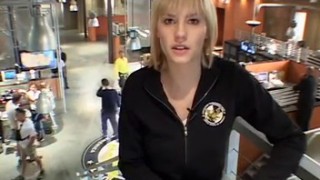Scott Ellis of The Sun-Herald interviewed Jon Cassar about the filming process behind 24.
In a cold, dark paddock of a ranch outside Los Angeles, Kiefer Sutherland is standing in front of a heater, warming himself between takes for series three of 24.
Once again, the clock has started ticking for Counter Terrorism Unit agent Jack Bauer (Sutherland) and once again he has just 24 hours to save the world.
As usual, the pace of the show means that Jack’s been caught unawares and is racing through a freezing night in just a light shirt and jacket while those around him are rugged up in full combat gear.
It’s inconvenient for Sutherland as he shivers in the cold, but it’s all part of the style that director Jon Cassar has developed to give 24 its unique feel.
“That’s our point of difference,” Cassar said, “the fact that everything is in real time and everything is shown.
“If a guy gets into a car, you need to see him get in, start it and travel from A to B. It makes everything a little bit more real.
“On other shows they can say, “Hey, let’s go to Bob’s” then cut to Bob’s and everyone’s there. They can lose big blocks of time. We can’t; we’re watching every single minute.
“On another show you might not see Bob for a while or something will come up on the screen: ‘One week later’ . . . One week? What the hell happened in that week? What did Bob go through in his life that we missed?
“Well, here, that’s never a question, we’ve gone through every minute of Jack’s life in that 24-hour period and you get totally invested.”
And if that means Jack doesn’t have time to stop for a warmer shirt, then so be it. The pace of the story – and the way it’s filmed – have advantages beyond comfort.
Chatting with Cassar as he defrosts, Sutherland points out that Bauer, having been on the run for 11 hours straight, is more likely to react in a way that is not in the script. Immediately, the scene is rewritten and a new version incorporated.
“That happens quite often because we’re pumping the scripts out so quickly,” Cassar said. “We don’t get the year or so a feature film has where they can keep playing with and adjusting a script.
“Here it’s written, we shoot it and often it’s not until you physically see someone perform that moment do you know whether you might have to make that change.
“Luckily, because I’m a producer/director on the show, I have the ability and the freedom to do that. Kiefer also brings a lot to the show. He’ll come in and say, ‘We just need to do this’, and I’m right there to give it a try.”
Even whole characters can be written out if it’s discovered they don’t work.
“One thing we don’t do on this show, and one of the reasons it’s so successful, is we don’t write 24 episodes, we don’t say here is the whole lot,” Cassar said.
“What the writers do is they adjust as we go. Sometimes they will see an actor and think ‘Wow! that guy’s great, let’s keep working him’ whereas if you wrote the full 24 hours and you had one character who was in 17 episodes and he didn’t work, you’d be stuck with him.
“By being just a couple of steps ahead they know where they’re going, but they can make decisions as we go. The audience likes this guy, let’s keep him; they hate him, let’s kill him!”
And even the actors on the show know anything could happen. In the first season for example, Sarah Clarke, who plays Nina Myers, didn’t discover she was the mole within Jack’s unit until she was handed her script late in the series.
This time around James Badge Dale, who plays Jack’s CTU colleague, said he’s playing scenes so they could be interpreted both ways – just in case he turns out to be the bad guy.
It’s all about keeping the audience guessing, Cassar said, and keeping 24 unique.


24 Season 3 DVD Audio Commentaries
By 24 Spoilers , December 7th, 2004
Here are all six audio commentaries from the 24 Season 3 DVD. 24 Season 3 Episode 3 commentary by Kiefer Sutherland (Jack Bauer) and writer Howard Gordon: 24 Season 3 Episode 5 commentary by writer Evan Katz and Riley Smith (Kyle Singer): 24 Season 3 Episode 10 commentary by Sarah Clarke (Nina Myers) and writer… View Article